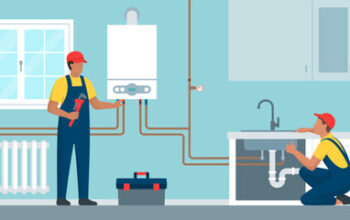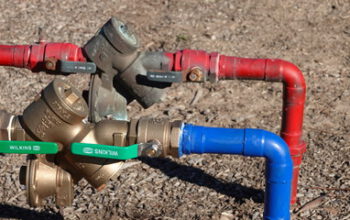Water and sewer services supply drinking water and remove sewage, wastewater, and gray water for treatment. Water infrastructure includes dams, reservoirs, well fields, aqueducts, and pumping stations. Most of our water is delivered by public systems that serve 89% of the citizens. Private utilities serve the remaining 11%.
Water

Whether you are looking to install a new water line for your irrigation system or have a clogged drain that needs to be cleaned, our licensed plumbers can provide the quality service you need. Drain and sewer services are important to keep your home healthy and safe from sewage backups.
The water supply and sewerage bureau manages the city’s public water supply and wastewater collection system. It operates and maintains 11,300 km (7000 mi) of water mains, tunnels, aqueducts, and other infrastructure to bring fresh water to city residents from 19 reservoirs and three controlled lakes and to deliver waste to 14 treatment plants. The system also preserves streams, ponds, and other wetland (“bluebelt”) areas, allowing these natural alternatives to storm sewers to perform their natural function of conveying, storing, and filtering stormwater runoff.
The city’s water and sewer rate policy board is charged with setting rates that provide sufficient revenue to operate and maintain the water and sewer systems and encourage conservation. The board meets monthly to review and approve new or revised rates and policies.
Water and sewer rates are calculated on a per thousand gallons of usage basis. Water meters are read at approximately the same time each month and customers are billed for consumption according to their meter readings. Sewer use charges are based on what goes down the drains; the more water is used, the higher the sewer charge.
A low-income household may be eligible for the low-income household water assistance program to help pay for water and sewer services. This temporary program helps those who need to spend a significant portion of their income on water and may face disconnection. The program is administered and funded with federal grants.
Many older homes have lead pipes that can leach into drinking water, posing serious health risks for children and adults. The city is working to replace these old pipes and implementing programs to reduce water consumption.
Sewage
Sewage is waste matter, mostly consisting of feces and dirty water from household activities like washing dishes, laundry, or flushing toilets. It is also known as wastewater and, if not treated properly, it can cause serious harm to humans and other living things. This is because it can contain bacteria that can make people sick if they come into contact with it through drinking, swimming, or other recreational use of water bodies. It can also cause illness in plants and animals when it enters their habitats, as well as the degradation of natural ecosystems.
Despite the best efforts of water companies to protect their sewer systems, sewage sometimes escapes and enters the environment, especially in times of heavy rainfall when stormwater overflows or groundwater seepage can overload the sewer system. This is called a sanitary sewer overflow and it can cause sanitary sewage to back up into houses or businesses and spill out of manholes onto streets, parks, or rivers. It can even pollute the air with noxious gases like hydrogen sulfide.
Untreated sewage is also a danger to wildlife, as it contains many toxic substances that can poison fish and other organisms. It also causes eutrophication, which deprives aquatic life of oxygen and destroys their habitats. It can also damage coral reefs and other fragile ecosystems.
The problem of sewage pollution is worse in lower-income areas, where open sewers are common. In these cases, the sewage is often directly washed into rivers and other waterways or pumped straight into the ocean, where it can also be diluted with stormwater runoff. This can lead to the deaths of many living creatures and damage crops, as well as creating a health risk for people who live near the affected bodies of water.
To help prevent sewage pollution, water companies are required to monitor their sewer systems regularly and keep them in good repair. They can also educate people on how to reduce the amount of waste they put down their drains, as this will reduce the likelihood of a sewage leak into waterways.
Service Laterals
Sewer laterals are pipes that connect the end user’s building or property to the village’s sanitary sewer main. The lateral is owned by the end user, and as such, the owner is responsible for the inspection, cleaning, maintenance, and repair of the lateral. The lateral can be under the street, within the right-of-way, or on an easement and is typically part of a private plumbing system.
A homeowner’s lateral can be damaged by tree roots, poor construction, earth settlement, blockages, or other causes. When this occurs, the lateral must be cleared and repaired by a licensed plumber. A lateral can also fail due to a structural failure of the pipe, or if the lateral is corroded and not properly maintained. The lateral is also subject to damage caused by other utilities that are buried in the same trench, such as water, gas, and telecommunication lines.
As a homeowner, the best way to prevent costly sewer backups is to maintain your lateral regularly by having it inspected and cleaned. The lateral should also be free of obstructions such as children’s toys, diapers, cloth items, paper products, and grease. A clogged lateral is a common cause of sewer backups and can be very costly for the homeowner.
The lateral should be air tested at the point of connection to the sewer main (terminal box or meter) and at intervals not to exceed 100 feet from the lateral invert, where practical, to ensure the lateral is in good condition and that there are no leaks. A lateral that does not have an air test reading of at least 4 to 5 psi should be replaced.
During new construction, a new lateral shall be installed from the building to the public sewer main, unless waived by the Director. The lateral shall be constructed to city specifications. It should not tie into manholes unless approved by the director, and where allowed, the lateral inverts shall match the crowns of the manhole liners.
During repairs on sewer laterals, the lateral must be air tested at each cleanout in the system. A lateral must also have a cleanout (set in a cleanout box conforming to city standard details) on each side of the property line at the maximum possible intervals, and within 100 feet of the public right-of-way or easement line. If the lateral is over 100 feet long, methods to convey sewage flows (bypass pumps or use of flow-through plugs with periodic release of sewage) must be provided at each cleanout.
Certification
The water and sewer utility industry serves a vital public service. They supply drinking water to residential, commercial, and industrial end-users and collect sewage and wastewater for treatment. They also install backflow prevention devices and maintain water and sewer lines.
Most citizens live in communities served by a public water and sewer system. The utilities are typically managed by city or county government entities. However, a small percentage of people receive their water and wastewater services from private utilities. This type of service is often offered in conjunction with electricity and natural gas services through a multi-utility provider.
There are many different grades of water operator certification in the state. Each level requires a certain amount of education, training, and experience. Additionally, several offenses may be considered good cause to suspend, revoke, or refuse an operator’s certification. These offenses vary from state to state and are based on the code of practice and other applicable laws and regulations.
In the city, the water and sewer division is responsible for 153 miles of sanitary sewer pipeline, including 2 water towers with a combined capacity of 3 million gallons, four water pumping stations, and two waste-water treatment plants. The division also has 1,500 fire hydrants, over 10,000 sewer service line control valves located on property lines, and more than 3,000 water meters.
The water and sewer division has six employees who work in the distribution and metering sections of the department. They respond to customer service calls, repair curb, and meter boxes, and read and install water meters. They are also responsible for investigating all water bill complaints and overseeing the cross-connection control program. The construction section consists of three employees who participate in water and sewer pipe replacements, lead service line replacements, and maintain the backflow prevention device testing and inspection program. They also attend training seminars on confined space entry, cross-connection control, and procedures for drinking water sampling.
The operation and management of a water or sewer plant is expensive. The sewer charge you pay helps cover operating costs such as personnel, fuel, vehicles, and all of the other expenses that come with running a modern waste-water plant. It also pays for reducing sewer overflows, addressing urgent backups, and other special projects.



